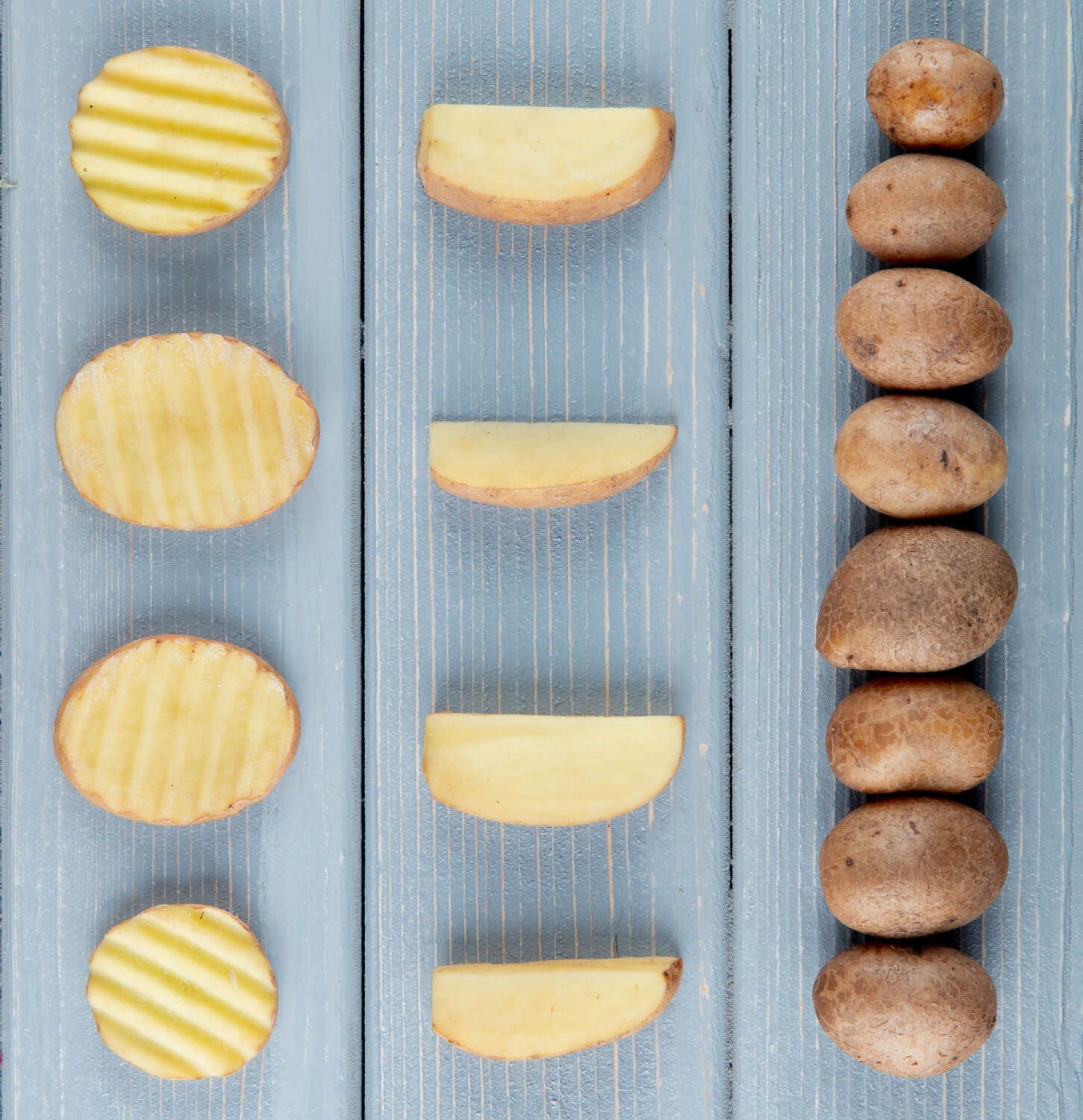When it comes to cooking potatoes, the thickness of your slices can make a difference. Whether you're making French fries or potato gratin, the size of your slices can impact everything from cooking time to texture.
In this micro-post, we'll delve into the science behind potato slicing and how your potato slicer can help you achieve culinary perfection.
Jump To:
- The Science of Slicing
- Tools for Perfect Slices
- Impact on Different Cooking Methods
- Practical Tips for Perfect Potato Slices
- Conclusion
- Frequently Asked Questions
- Further Reading
The Science of Slicing
The thickness of your potato slices affects how quickly they cook. Thinner slices cook faster than thicker ones because heat can penetrate through them more easily. This is why very thin potato chips can become crispy in a matter of minutes. At the same time, thicker slices used for dishes like au gratin need a longer cooking time to become tender.
- Heat Transfer: Thinner slices have a larger surface area in contact with the heat source, allowing for faster and more even heat transfer.
- Moisture Loss: Thinner slices tend to lose moisture more quickly, which can lead to a crispier texture. Thicker slices retain more moisture, making them ideal for dishes where a soft, tender texture is desired.
- Cooking Time: Thinner slices cook faster, reducing overall cooking time. This is especially important when frying or roasting potatoes.
Tools for Perfect Slices
A potato slicer is an essential kitchen tool for achieving consistent slice thickness. Whether you prefer a manual or electric model, a good potato slicer can help you cut evenly sized slices every time, ensuring uniform cooking and a better final dish.
- Manual Slicers: These are typically handheld devices with adjustable settings for slice thickness. They are affordable and easy to use but may require more effort than electric models.
- Electric Slicers: These are more advanced tools that can slice potatoes quickly and with minimal effort. They are ideal for large volumes but can be more expensive.
- Blade Sharpness: Regardless of the type of slicer, a sharp blade is crucial for clean, even slices. Regularly check and maintain the sharpness of your slicer's blade.
Impact on Different Cooking Methods
The thickness of your potato slices can also impact the outcome of different cooking methods. For example, thin slices are ideal for frying or roasting, where you want the edges to get crispy while the inside cooks quickly. On the other hand, thicker slices are better for boiling or baking, where the goal is a soft, tender texture throughout.
- Frying: Thin slices or strips (like French fries) are ideal for frying. The high heat and short cooking time make the outside crispy while the inside cooks through.
- Roasting: Thin to medium-thick slices work well for roasting. The oven's dry heat crisps the outside while the inside becomes tender.
- Boiling: Thicker slices are better for boiling, retaining their shape, and not becoming waterlogged.
- Baking: Thicker slices are preferred for dishes like au gratin or scalloped potatoes. They hold up well under longer cooking times and absorb flavors from accompanying ingredients.
Practical Tips for Perfect Potato Slices
When using your potato slicer, always ensure the potato is secure, and the blade is sharp. This will help you achieve clean, even slices. Remember to adjust the thickness setting on your slicer according to your recipe and the desired outcome.
- Secure the Potato: Make sure the potato is firmly held in place on the slicer. This ensures even slices and prevents the potato from slipping and causing accidents.
- Adjust Thickness: Most slicers have adjustable thickness settings. Choose the one that best suits your recipe and cooking method.
- Clean After Use: To maintain blade sharpness and prevent food buildup, clean your slicer after each use. Follow the manufacturer's instructions for cleaning and maintenance.
Conclusion
Understanding the science behind potato slicing can elevate your cooking and help you make the most of your potato slicer. Whether you're making a simple dish of fries or a complex potato gratin, the thickness of your slices matters.
For more insights into the world of potato slicers, check out our article on the best potato slicer for our top 4 recommendations.
Frequently Asked Questions
What is the best tool for slicing potatoes? A potato slicer is the best tool for slicing potatoes. It allows for consistent slice thickness, which is key for even cooking.
What is a potato slicer called? A potato slicer is often referred to as a mandoline or a potato chipper, depending on the design and function of the tool.
What is the best potato dicer? The best potato dicer depends on your specific needs, including the volume of potatoes you need to dice, your budget, and your storage space.
What does a potato slicer do? A potato slicer cuts potatoes into even slices. This is important for cooking as it ensures all slices cook at the same rate.
Further Reading
- The Essential Guide to Cleaning and Maintaining Your Potato Slicer: Get practical tips on how to keep your potato slicer in perfect condition for long-lasting performance.
- Manual vs Electric Potato Slicers: An In-Depth Exploration: Delve into the advantages and disadvantages of manual and electric potato slicers.
- Beyond Potatoes: Creative Uses of Your Potato Slicer: Discover innovative ways to use your potato slicer with a variety of fruits and vegetables.
- Safety First: Mastering the Use of Your Potato Slicer: Learn essential safety measures for using your potato slicer effectively and safely.
- How to Use a Potato Chipper by Hot Air Frying: Elevate your snack game with perfectly sliced potato chips made effortlessly with a potato chipper and hot air frying, thanks to our detailed step-by-step instructions.



